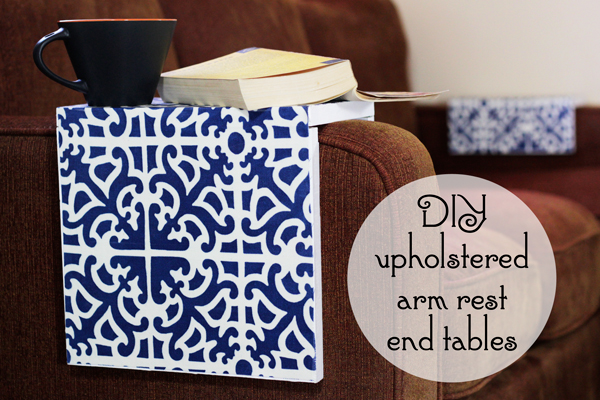
In every dorm room and small apartment, space is at a premium. My living room is definitely one I’m constantly getting creative in to save space, which is where the ideas for these arm rest “end tables” came from. I’ve been using these in my home for a few months now, and they’re super convenient for keeping drinks, phones and remotes within reach.
The arm rest end tables come together in two phases: first converting a single four foot board from the hardware store into the right shape, and phase two is as simple as a making them pretty with a bit of paint, fabric and Mod Podge.
Supplies
for phase 1, construction
1 x 12 x 4 unfinished pine shelf board
8 L-brackets
16 screws (unless your L-brackets require more than two each)
screw driver/drill
primer
paint
paint brush
for phase 2, upholstery
1/2 yd upholstery fabric, don’t use anything too stretchy
freezer paper (optional)
iron (optional)
pen
ruler/tape measure
paper scissors
fabric scissors (optional)
Matte Mod Podge
sponge brush
brayer (optional but recommended)
something to stand your arm rests on as you work
Hard Coat Mod Podge
Directions
Phase 1 – construct the arm rest end tables
Measure the distance across the top of your couch’s arm rests. Cut your pine board into six pieces (with some assistance if necessary): two pieces that are the width of your couch’s arm rests, two pieces that are 4 inches long, and two pieces that are 10 inches long. You don’t have to use my exact measurements for the side pieces – I ultimately chose those lengths at based on how much board I had left after cutting the top pieces of wood for the arm rests.
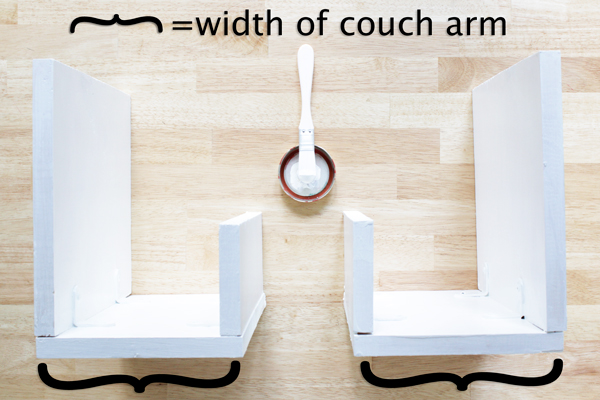
Next, using 4 L-brackets per arm rest, attach the side pieces of wood to the bottom of the top piece. See the above and below pictures for how I constructed mine. They construction is very straightforward. Just make sure to align the edges of the top and side pieces as closely as possible before securing with screws.
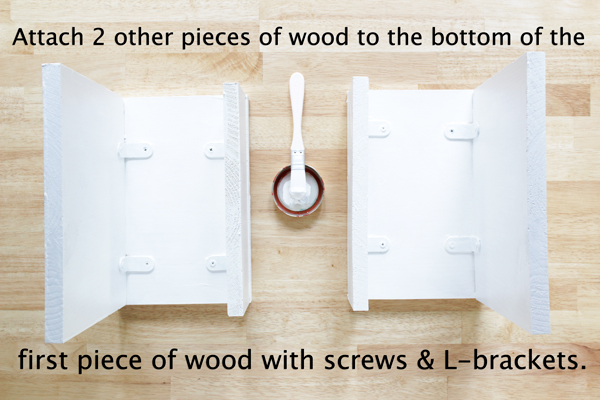
Prime your arm rests and paint them. The color they’re painted will be visible through the upholstery, so choose your paint color wisely. I went with white since there’s white in my upholstery fabric. Let dry completely before phase 2.
Phase 2 – “upholstery”
And by “upholstery,” I mean decoupaging fabric to wood.
Take two measurements: all the way around the outside of the arm rest (the black dotted line pictured below) & the width of your arm rest (red dotted line below).
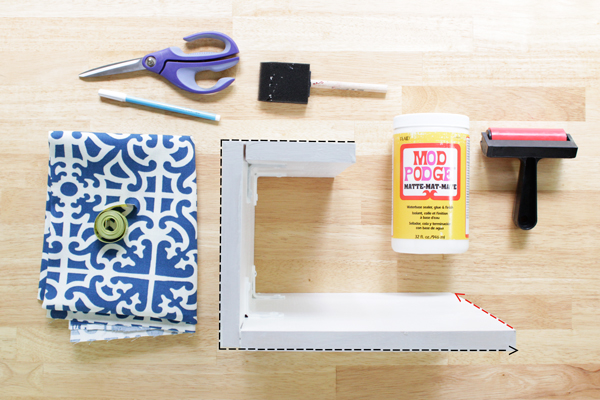
You’ve got two options for cutting out your fabric. One, you can draw your rectangle, using the measurements from above, onto the wrong side of your fabric with a water soluble marker (a.k.a. embroidery marker). Draw a second rectangle on the wrong side of your fabric and cut both out.
Two, you can draw your rectangle onto the non-waxed side of some freezer paper, cut it out, iron it to the wrong side of your fabric, and cut out your fabric. I opted for this method because I had the supplies necessary on hand, and because it’s incredibly accurate. And since the fabric will be adhered to the hard corners of a wooden object, my priority was accuracy. Bonus: you can reuse the freezer paper stencil for the second rectangle of fabric you’ll need to upholster your second arm rest. Just something to keep in mind! :)
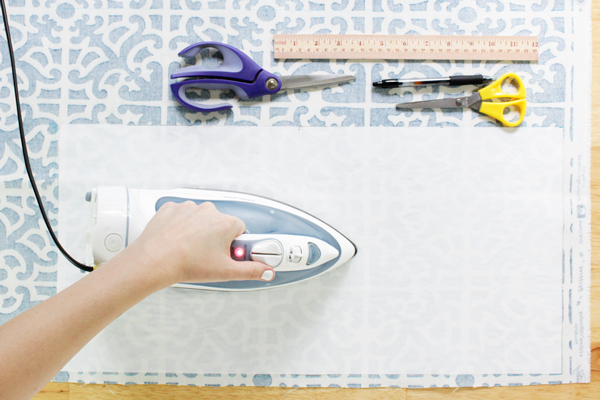
When your fabric rectangle is all cut out and the freezer paper peeled off, double check your work by lining up the edges and corners of the fabric on the arm rest to ensure cuts are straight and the fabric is the right length.
Find something to rest your arm rest on while you work through the rest of the project. Since the arm rests have differently-lengthed sides, they’re not a fan of standing on their own.
Paint a layer of Matte Mod Podge onto the shorter side and top of the arm rest. Carefully lay your fabric, all lined up, onto the shorter side and top of the arm rest. If you need to do any adjusting/realigning do it now. Last chance, guys. Luckily, it’s still super simple at this point and feels almost like moving a post-it note around.
All lined up? Next, move your arm rest stand, tilting the arm rest so it’s resting with the top and long sides facing up. Holding the rest of your fabric out of the way, paint a layer of Matte Mod Podge onto the long side of the arm rest. Fold down the fabric, carefully aligning the edges. If you measured right, all should be perfectly lined up. Just like when you stuck the fabric to the first two sides of the arm rest you can peel off the fabric from the long side – post-it note style – and rearrange it if needed.
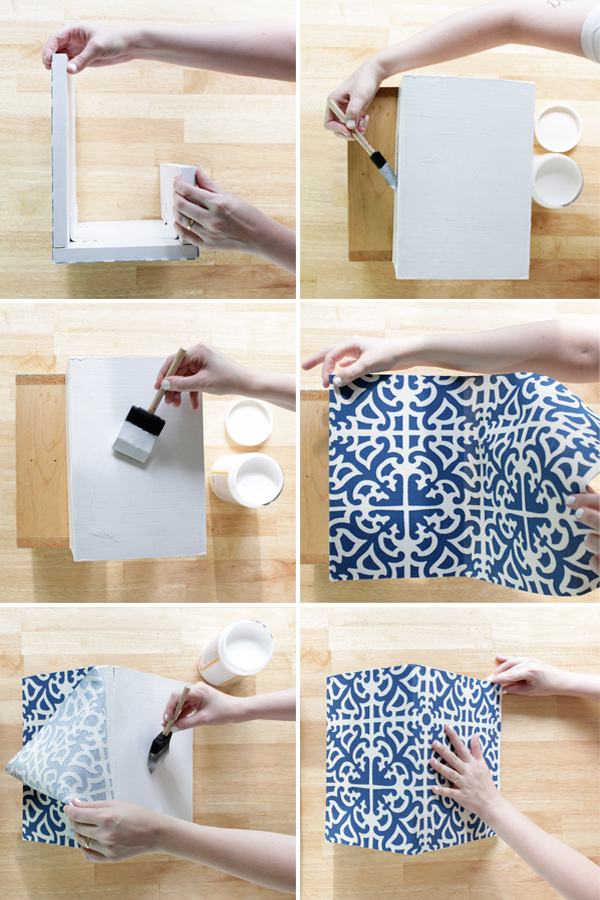
Now, we’re past point of no return.* For each side of the arm rest, starting with the shortest side, you’ll paint a layer of Matte Mod Podge and run the brayer over it to really work in the Podge. Same order as last time – small side, top side, long side. I find this easiest for grappling with the arm rest’s asymmetrical shape. Also, use your arm rest stand as necessary to keep from messing up your work.
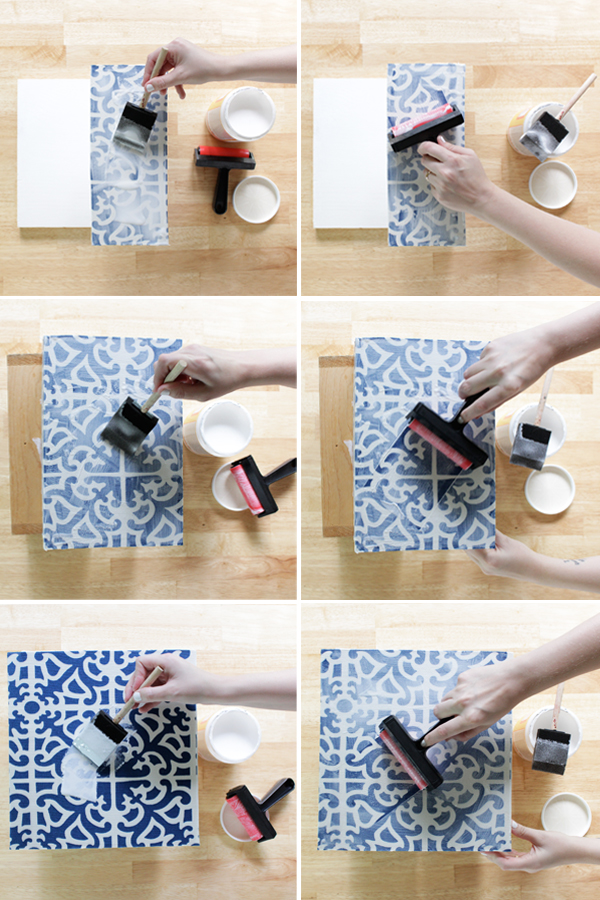
*Yep, that was a Phantom of the Opera reference. I admit it.
Repeat the whole “upholstery” process on the second arm rest and let both dry over night. In the morning, paint a layer of Mod Podge Hard Coat over the top of the whole thing with a sponge brush (no brayer required), and let dry for a few days. The instructions on the bottle for Hard Coat Mod Podge recommend letting it cure (get super duper sealed) for 4 days. So basically don’t put a bunch of condensation-covered beers on it for a few days before using. The Hard Coat is great because after the pain-in-the-butt that is curing, you’ll have a totally awesome, space-saving surface to set drinks, remote controls, or whatever on that you can wipe clean. Nice, huh?
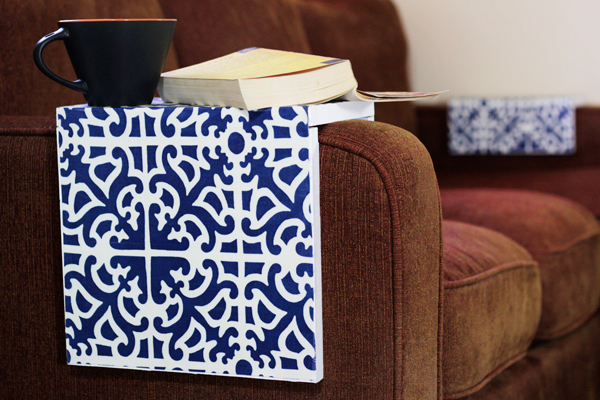
This project takes some doing, but it saved me so much money and a lot of space my tiny living room doesn’t have. How would you make this project yours? Different fabric? Covering the whole thing in fabric instead of just the top? Using Sparkle Mod Podge instead of Matte? Let me know, ladies!
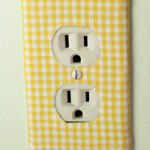
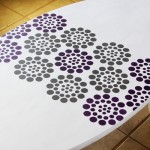
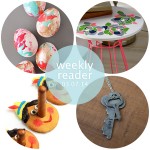







What a super smart idea! Thanks for the great tutorial. This is an awesome innovation for a small space.
Loved how they turned out.
Great Idea. Maybe your dad and I could make that. Thanks for sharing.
I love the idea of upholstering it. My sofa arms curve out a bit, so it doesn’t have a flat surface down the side. Do these sit sturdy enough around the arm that the side wouldn’t be a problem or would I have to somehow slant my side board in?
I think it depends how heavy the wood you use is, and how balanced the arm rests are. You might consider padding the inside somehow, or using a fancy saw that lets you create a curved side to parallel your couch.
Thoughtful idea – and an easy way to accent a room.
These are brilliant! Especially for people who like to snack in front of the TV, not that I know anyone like that :0
LOL – why do you think I made them, Amy? :D